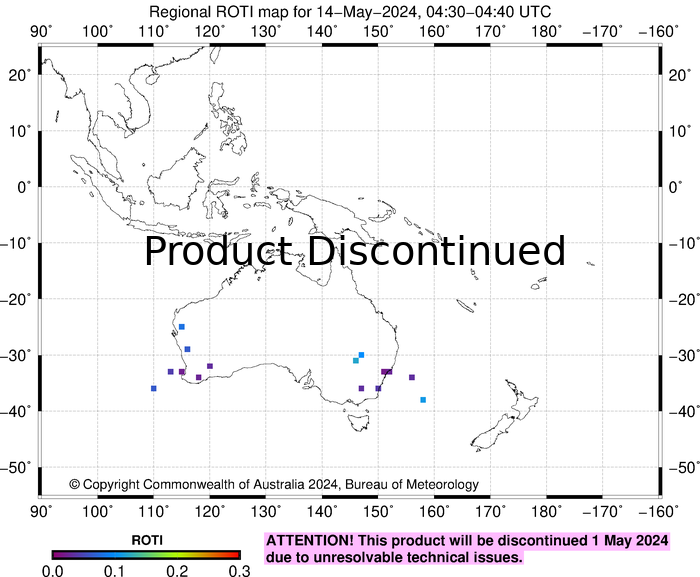GPS Derived Regional Map
Updates: Every 10 minutes

Your browser has javascript disabled. With javascript enabled you would see control buttons here to enable viewing up to the last 3 days of TEC map images interactively.
This map is derived using high rate (1 Hz) data from GPS recievers. The underlying quantity computed is the variance of the time derivative of the total electron content (TEC) over 1 minute intervals. This is commonly know as ROTI (Rate of TEC). This serves as a measure of ionospheric scintillation since the disturbed ionospheric conditions that cause scintillation lead to short timescale variations in the TEC.
The mild and moderate levels of scintillation are defined by comparing ROTI values observed during scintillation events at a GPS receiver in Darwin with the S4 index measured by the SWS ISM at Darwin. This calibration should be considered to be indicative of the relative level of scintillation rather than a robust quantitative measure. The severe level of scintillation is reported when ROTI levels over a 1 minute period are high and the GPS receiver reports a loss of lock on the corresponding satellite during the same period. This indicates the presence of scintillation sufficiently severe to cause the reciever to no longer track the satellite, with a corresponding reduction in positioning accuracy.
The colours show the highest level of scintillation observed over 10 minute intervals.
For more information, please visit the About Ionospheric Scintillation page. For comparison to the SWS high-rate (50 Hz) scintillation monitor regional map, see also the S4 Regional map page.
Ionospheric scintillation products and services are under ongoing development, and your feedback is valuable to us. If you are experiencing problems with ionospheric scintillation in GPS receivers or satellite communications equipment, or have a suggestion on ways we may improve our scintillation-related services, please contact SWS.





